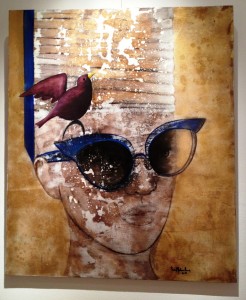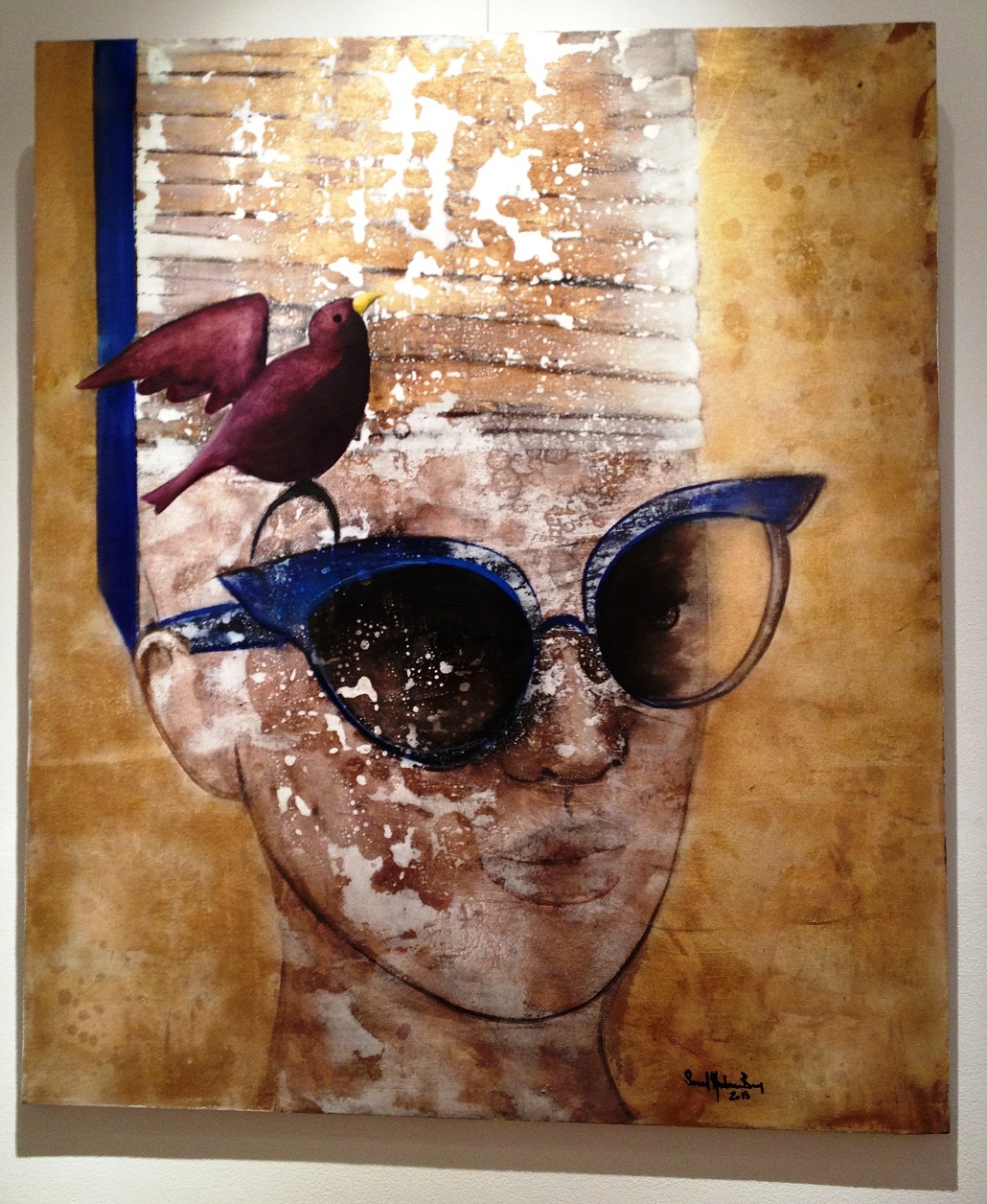
(Photo by Thoraia Abou Bakr)
Given the current state of Arab countries, it is understandable, and sometimes encouraged, to become removed, even to the point of indifference. When people witness the destruction of their own hometown from afar, it becomes difficult to live in a state of duality. One has to reconcile fear for his or her own life with the guilt of not being able to do anything to prevent the harm done. Therefore, it is easy to live in a state of “Veiled Reality,” which is the name of Souad Mardam Bey’s new exhibition at Zamalek Art Gallery.
The Syrian artist has been living in Egypt for 13 years, but given the current state of her homeland, she decided to tackle the issue of how one hopes to stop seeing the current tragedies. Hani Yassin, the gallery’s manager, explained her point of view: “You know when you are so fed up that you do not want to see anyone or to be seen?”
That is exactly what the portraits of people wearing black shades are all about; the idea of a lightened kind of reality and an attempt at removing yourself from an unwanted experience. However, life seems to seep through the man-made fence, which is portrayed through the use of colorful birds and black cats.
In the gallery’s brochure, the exhibition is explained: “Souad Mardam Bey meditates on contemporary socio-political life. Through a series of large-scale portraits, where the subjects’ eyes are covered in large sunglasses that obstruct their vision in some canvases, their bodies covered in multiple layers of clothing in others, the artist tackles pop culture and captures the uncertainty pervading everyday life in the Middle East.”
Mardam Bey uses elements of the streets and culture, birds, cats, clowns and dervishes, to depict elements of the community. She also uses known costumes of the people, such as the way Syrian women wrap the headscarf, to point at her own culture. However, it always seems that the people are subdued and their colors are dark to show the depressing state and the bleakness of their present.
The artist’s use of colour is also interesting. She uses only spurts of colour in every painting, so it is very minimalistic, but it gives life to the paintings. They add an interesting quality to the transfixed portraits as they face their veiled reality.
The exhibition is very appealing, and it is easy to find yourself staring at one of the paintings for a long time. It also has a kind of a quiet Andy Warhol quality to it, but with less flash and more substance.








